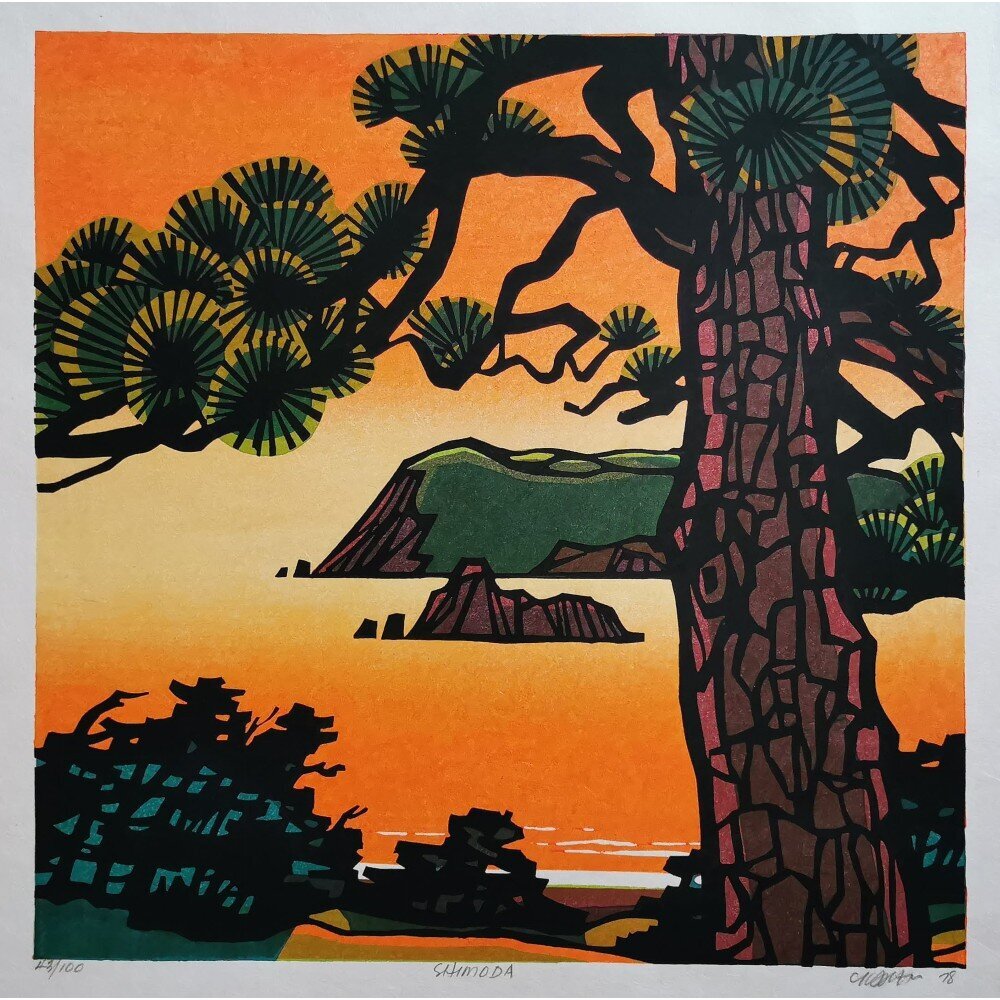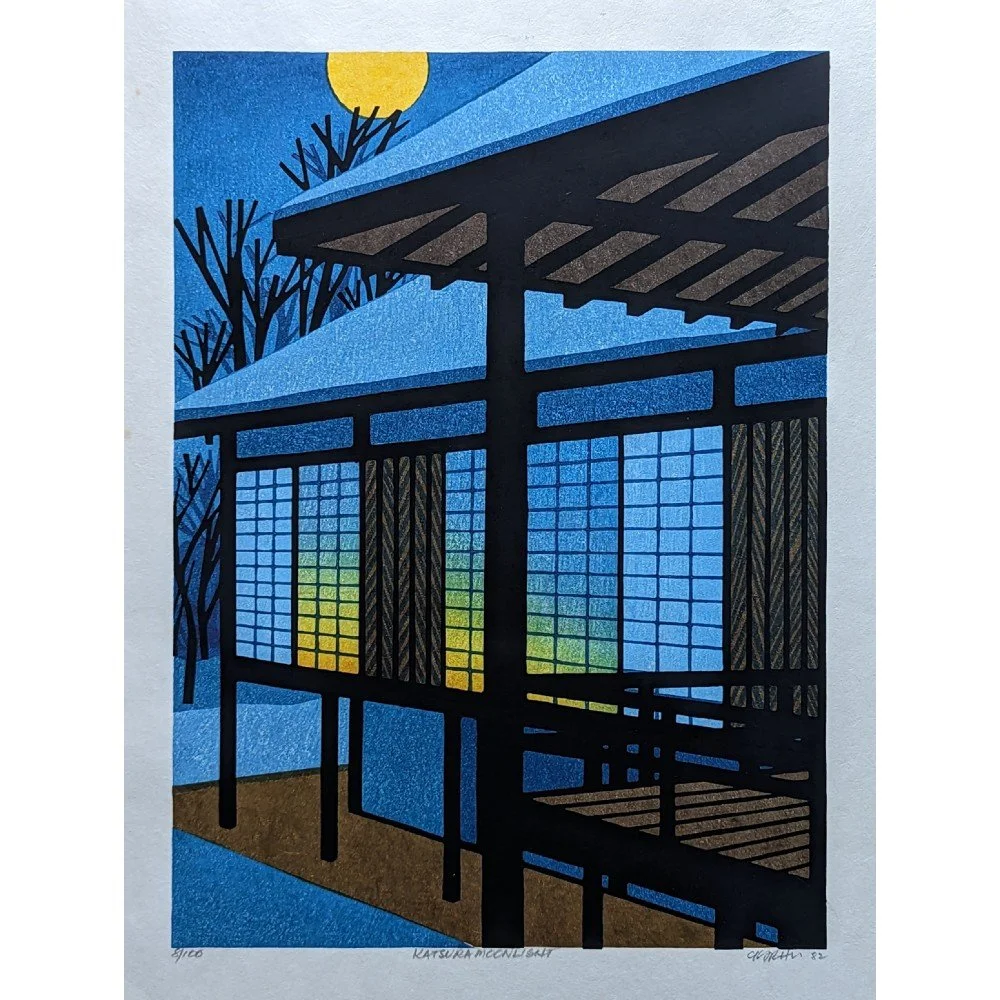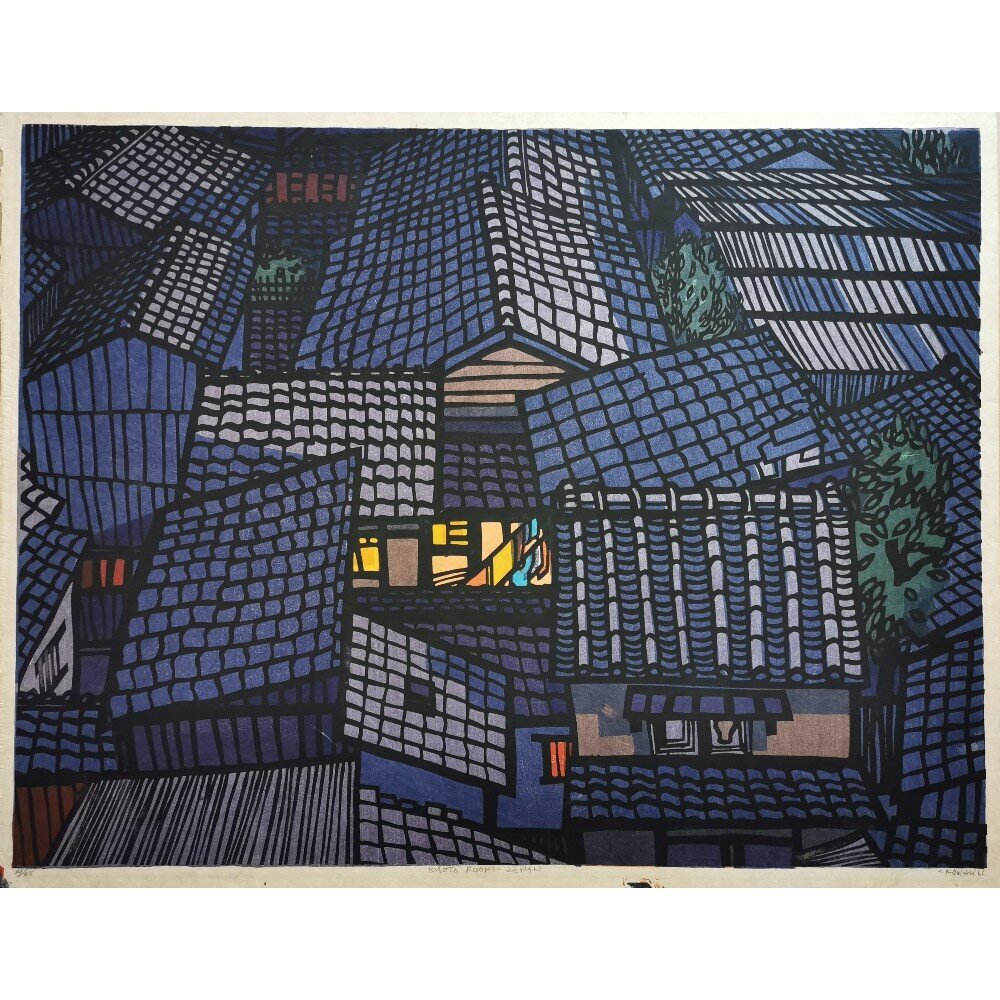クリフトンカーフ CLIFTON KARHU (1927-2007)
Clifton Karhu is arguably the most successful, contemporary Western artist to have worked with the traditional Japanese woodblock medium. A true master - both designing and cutting his own prints; his bold line work and distinctive graphical style often reflects a quiet, subtle and warming side of traditional Japan. Residing in Kyoto for the majority of his life, Karhu was a highly respected, well thought-of figure in both the local and international art communities.
Latest News: Joel Karhu rekindles the Karhu flame: See his fabulously striking works @ The Tolman Collection (Tokyo) | The Tolman Collection (New York).
Artist Biography:
An American of Finnish descent, Clifton Karhu was born in Minnesota in 1927. Raised together with his twin brother Raymond, Karhu was the son of painters Arne and Anna Karhu. Karhu grew up in Duluth, before moving to Worthington, Minnesota with his family in 1944 where he finished his schooling. Graduating in 1946, Karhu spent the next couple of years with the military, serving at an American Navy base in Sasebo, Kyushu, following the end of the Second World War.
Despite having a set vision on becoming an artist since his early teens, painting was not Karhu’s only passion. Returning to America following his military service, in 1950 Karhu enrolled as an art student at the Minneapolis School of Art before quitting just two years later. Religion was a large part of his life. Karhu chose to leave his art studies due to conflicting feelings around artistry - its questionable morality where “…artists were only people who pursued their pleasures with rich people's money." Attending Bible school, in 1955 Clifton Karhu was finally ordained a Lutheran minister and set about a new period in his life working as a missionary.
Removing himself from the missionary work, in 1958 Karhu chose to move his new family to Gifu City, a small provincial town northwest of Kyoto where he set about returning to his art. Despite a difficult time in his life, living and working in relative poverty, Karhu soon found local success n 1961; obtaining first prize at the Chubu Taiheijo Bijutsu Kyokai Ten (The Middle Pacific Art Group Exhibition) and fixing his first single, professional exhibition at the Shin Gifu Gallery in Gifu prefecture for his watercolour work.
In search of providing their three children with an international education, Karhu finally settled in Kyoto in 1963. The next few years in Kyoto proved heavily influential in Karhu’s work. Arguably forming the foundation for all his future success, Karhu found tutelage under recognised woodblock artist/gallery owner Tetsuo Yamada and colour theorist Stanton Macdonald-Wright. Responsible for shifting Karhu’s artistic doubts, Karhu proceeded to fulfill a very successful career in woodblock printing - carving his own works largely by himself.
Typical scenes were largely those of Machiya, where Karhu took great inspiration from the old/traditional themes of Kyoto. Working in a distinctive graphical style, with bold line work together with striking colours, Karhu often reflects the quiet, subtle and warming side of his subjects – a skill quickly recognised by the Japanese with Karhu elected as head of the Kyoto Japan Print Association on numerous occasions.
Clifton Karhu passed away in 2007 after an illustrious career that saw him viewed and celebrated as a local Kyoto celebrity. Having produced numerous solo exhibitions in Japan as well as having exhibited widely in many countries around the world, many of his best works can be found in national galleries across the globe.
b: 23/11/1927 - Duluth, Minnesota, USA.
d: 24/03/2007 - Kanazawa, Ishikawa Prefecture, Japan.
Written by: Jack Payne | © Lambsquay Gallery
BIBLIOGRAPHY/ARTICLES:
Blakemore, F. (1983) Whos who in modern Japanese prints. New YorkTokyo, Weatherhill.
Horvat, A. (1986) Karhu of Kyoto : Clifton Karhu, a Former American Missionary, Has Become One of Japan's Most Famous Artists--to Some, 'More Japanese Than a Japanese'. [Online]. 24 August 1986. Los Angeles Times. Available from: https://www.latimes.com/archives/la-xpm-1986-08-24-tm-17650-story.html [Accessed: 31 October 2016].
Ouse, D. & Zenith City Online (n.d.) Clifton Karhu. [Online]. Zenith City Online. Available from: http://zenithcity.com/archive/people-biography/clifton-karhu/ [Accessed: 2 November 2017].
Tolman, N.H. (2007) In memory of 'The Blue-Eyed Japanese'. [Online]. 19 April 2007. The Japan Times. Available from: https://www.japantimes.co.jp/culture/2007/04/19/arts/in-memory-of-the-blue-eyed-japanese/#.Xb3gHuiTLks [Accessed: 30 October 2016].
Special Mention to Norman H Tolman of The Tolman Collection, Tokyo. Located in 2-2-18 Shiba Daimon, Minato-ku, Mr Tolman was Karhu’s dedicated dealer and still remains the purest source of Karhu prints. Continuing to represent & honour Karhu’s life, I would encourage any Karhu (K)onnoisseur to either seek a copy of Mary & Norman Tolman’s personal tribute to Karhu - Karhu@77-; purchase an annually produced Karhu calendar; or simply call by and view works from the other outstanding Japanese artists the collection represents. Having had the pleasure to meet Mr Tolman, Daisuke, and the rest of the gallery staff on a torrentially wet & stormy August day in 2018 - where a typhoon was passing through - you are sure to be met with a warm & welcoming hospitality whatever the weather!





















